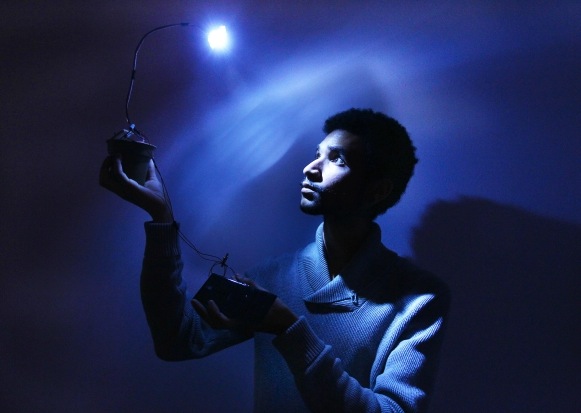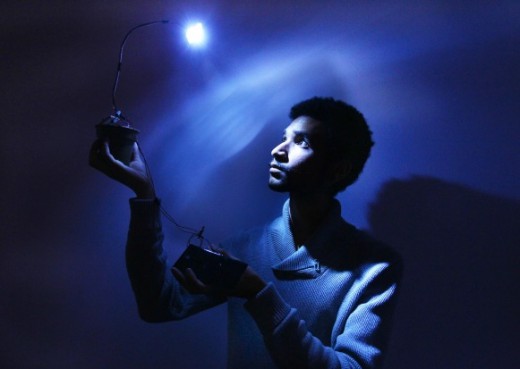Stephen Surlin, a Windsor-based artist and musician (also known as DJ Furs), recently took some time aside from his busy life as a University of Windsor Fine Arts student to discuss his current exhibition Artist as Activist and how the works within it came to be. Surlin has worked with Broken City Lab on various projects and his solo work can be seen at the SoVA Projects Gallery at the University of Windsor this week until January 28. His closing reception is at 7pm on Friday, January 28 at the SoVA Projects Gallery.
The interview can be read after the page break.
Briefly describe your background in general and how you came about working within the arts, and visual arts specifically.
I was always interested in building and creating things with toys like Lego and K’nex, and then I got more into technology, communications and music. Once I got to my later years in high school, I began to think about ideas of activism and social justice. I think I was brought to the arts because it allows me to mix all of these interests together.
What separates your work from Artist as Activist from existing as applied design or solely activism? (How does it fit into the realm of ‘fine art’?)
My work in Artist As Activist works outside of applied design because of its connection to and emphasis on creativity, necessity, spontaneity and lack of economic drive that places my goals in a different sphere than applied design. The activism comes in when a group is worked with in order to help rather than create or exploit a “customer”.
How do your political beliefs inform or fuel your work as a visual artist?
My political beliefs cause me to research the activities and roles of contemporary economics and the systematic disenfranchisement of citizens around the world. Finding a strategy to deal with these concepts is difficult, though it is my political fervour that gives me some guidance.
What are your thoughts concerning the use of renewable/non-renewable resources to produce works of art?
I do cringe some times when I see art works that utilize a lot of materials that will be thrown out after the “visual stimulus” is over. I think it is okay that these projects exist, and I would prefer them to happen (I would rather see less packaging used on consumer products), though I feel that the contradiction in my work would be too great to act in that way for my work.
Has your time working with Broken City Lab had any effect on the way you operate as an artist in the city of Windsor?
Broken City Lab has helped me grasp and apply many important contemporary concepts around activism and engaging with the community. Especially applying strategies that cause more action in my artistic practice in Windsor has been a big help.
What role, in your opinion, does writing have in the field of visual arts?
I think the importance of writing is apparent now as it has been for the last few hundred years. The conceptual frameworks that are explored and expanded upon in contemporary art works can create a wealth of knowledge that can be spread around relatively quickly to understandable and accessible form.
During your trip to Nigeria in 2010, did you spend much time comparing the lifestyles of Nigerians to those of the West? What did you notice?
I spent more time comparing their lives to the ones I encounter in my “every-day” life. The communities we travelled in were quite “developed” in a similar way to our communities. Most people there wore jeans and polo t-shirts like they do here. One of the largest things I noticed was the different level of access to natural resources and energy compared to here. This observation led me to hone in on the issues in “Artist As Activist”.
What role does technology play in your activist ambitions?
Mainly documentation and research.
What lasting impression do you hope is obtained from visiting your upcoming exhibit, Artist as Activist?
I hope the viewer can gain a greater appreciation for contemporary design and concepts surrounding sustainability. I hope they will walk away with a more complex vision of the lives of the people in the communities I was travelling in. And that there are many people around the world engaged in all sorts of activism.
Are there any other artist/activists who have been instrumental in the development of your way of thinking and producing art?
I think Justin Langlois and Broken City Lab helped me gain a more contemporary understanding of activism and design. The design group Design For The Other 90% was also instrumental in giving me the inspiration to come to the ideas and process I used for my current work.


Josh, great set of questions here. It’d be great to see you do some more interviews! The length provides a good starting point to some bigger conversations … And there’s some interesting answers here, though Surlin skirted that question about fine art; that’s always a tough one.
Thanks! This was really enjoyable to do and I’d love to keep at it.
Oh yeah, the fine art question…it had to be in there. It’s a tuffy. haha
Thank you to all of the BCL team for coming to my closing reception and talks.
I look forward to working with all of you in the hopefully near-future!